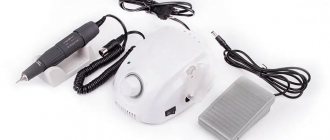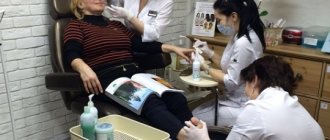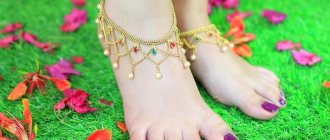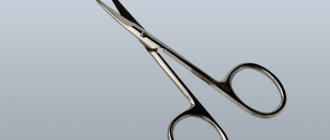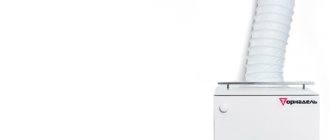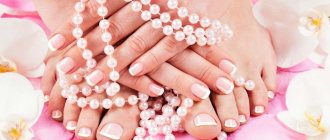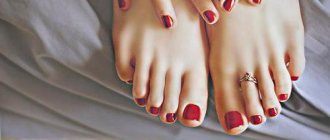Beautiful toenails have long been considered a sign of a well-groomed, cultured person. Many people are interested in which pedicure is better, hardware or classic? In modern salons, both types of cosmetic procedures are performed with high quality. Representatives of both sexes can use such services. Below is a detailed description of each type of pedicure, its advantages and disadvantages.
What is a classic pedicure
This pedicure is a manipulation during which the master uses sharp instruments:
- scissors;
- wire cutters;
- scrapers.
Other names for classic pedicure are edged, hygienic. The technique of this procedure is studied by each specialist, but is applied at the request of the client.

Before the main work, the feet must be steamed in warm water. This helps to soften rough areas. Essential oils or other care products can be added to the liquid.
At the next stage, the master cuts off the cuticle and calluses, corrects the shape of the nails, and coats them with varnish. At the end, a foot massage is often performed and a moisturizing or nourishing cream is applied.
Classic pedicure has an affordable price and is considered a budget service. It can be done in many beauty salons.
Features of traditional foot care techniques
Every nail technician begins his training with the classic cutting pedicure technique. It is performed with a certain set of cutting and grinding tools such as:
- Hard abrasives;
- Blades;
- Nail scissors;
- Nippers;
- Tschipchikov;
- Sanding files.
This procedure is a manual method of treating the skin of the feet and toenails. It is carried out according to this scheme:
- First, the old nail polish on the feet is removed.
- Then the feet are steamed in a soapy solution, to which you can add sea salt, cosmetic clay or a few drops of essential oil.
- Next, calluses, corns, and rough skin of the feet are removed using a special blade, followed by grinding the working area with abrasives.
- Afterwards, each nail, cuticles, and interdigital spaces are processed separately, ingrown nail elements are corrected, and hangnails are removed.
- The final stage of a classic pedicure will be a foot massage with moisturizing creams, decorative treatment and nail polish.
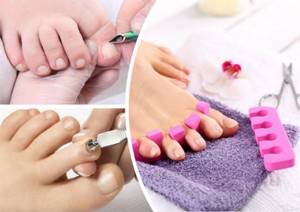
Advantages and disadvantages
The positive aspects of a trim pedicure are:
- Availability;
- Simplicity;
- Complete removal of cuticles and hangnails;
- Getting perfectly smooth feet.
However, the effectiveness of this procedure lasts for about a week, and then everything slowly returns to normal. And the disadvantages of a manual pedicure include both the flaws of poor-quality work of a poorly qualified master, and the consequences of the reaction of the patient’s body, which can cause them:
- A feeling of “thin skin” due to the fact that the rough area is removed at one time;
- Possibility of injury due to the woman’s closely located blood vessels;
- Pain due to removing deep calluses from large surfaces or cutting off a slightly larger layer of rough skin, touching the living epidermis;
- Infection. This can happen when dirt, viruses, bacteria or pathogens get into microscopic wounds when cutting the cuticle or skin inadvertently touched by cutting instruments.
On this occasion, I would also like to make a reservation about high-quality disinfection of instruments. At home, a woman should take care of high-quality sterilization of her instruments herself.
In the salon, after each patient, they must be thoroughly washed, treated with bactericidal preparations, and must also go through a steam, glasperlene or UV sterilizer.
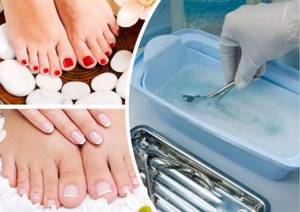
Contraindications to performing a classic pedicure are:
- Diabetes;
- Fungal skin infections;
- Poor blood clotting;
- Presence of open wounds;
- Phobia of fear of sharp objects.
Description of the hardware method
This technique has little in common with the classical procedure. Hardware pedicure involves the use of innovative devices. This method of caring for nail plates is improved. It is also called a “dry” pedicure.
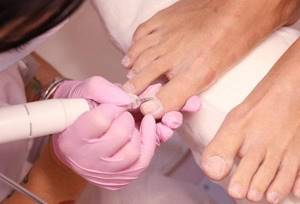
The method has the following features:
- There is no direct manual influence during nail treatment;
- to soften the hard epithelium, special chemical compounds are used;
- cutters are used that rotate at high speed.
The hardware technique provides high-quality results that cannot be achieved manually. It allows you not only to bring the nail plates into ideal condition, but also has additional properties. Thanks to this procedure, a healing effect is achieved and the likelihood of various pathologies in the foot area is reduced.
Who is it suitable for?
Due to the fact that combined care combines two technologies, even young fashionistas with delicate skin on their feet can do it. Moreover, representatives of the fair sex with sensitive skin have such a common problem as the appearance of calluses and corns when changing shoes.
Since the skin is injured, only the trimming pedicure method is not suitable for them. In this case, specialists offer hardware treatment of the skin of the feet. Soft attachments help cleanse the skin more smoothly and accurately.
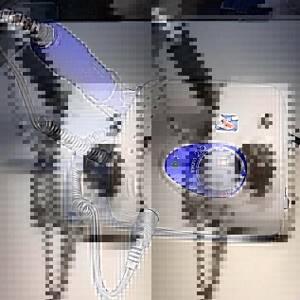
Machine for hardware pedicure from @krasotabel_minsk
Masters advise this category of women to pay attention to European pedicure, which uses only files and soft buffs, so it is almost impossible to injure the skin and nails.
As for women whose legs have too rough skin on their feet, on the contrary, they need a trimmed pedicure. This makes it more convenient to process cuticles and nails without using hardware techniques.
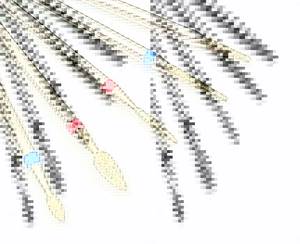
Milling cutter attachments for hardware pedicure from @krasotabel_minsk
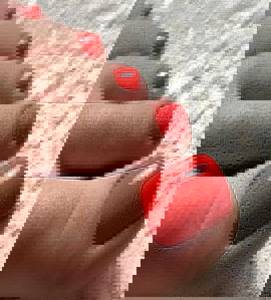
@nogtivminske
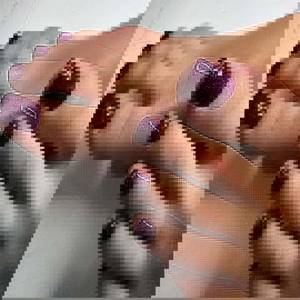
@marosha_nails
How are they different from each other?
Experts call classic and hardware pedicure completely different methods. Below are the main differences between them:
- Classic pedicure. To carry out this procedure, warm water must be used. It is necessary in order to soften the skin of the feet before the main stage of work. When performing a trim pedicure, sharp objects are used. The resulting effect does not last long. As a rule, a new treatment needs to be done after a week.
- Hardware pedicure. Does not require preliminary water procedures. It is carried out without mechanical abrasives, using modern devices. Evenly cleanses away dead layers, allowing you to get an excellent result. Does not require frequent repetition - it is enough to visit the specialist once or twice a month.
We recommend: Bestway or Intex mattresses – what is the difference and how to choose an air mattress
Recently, employees of beauty salons consider classic pedicure as outdated. Many recommend to clients the dry method, which is recognized throughout the world as more effective.
Only the hardware method allows you to perform a pedicure that meets all modern requirements. This procedure takes less time and is ideal for clients with increased sensitivity in the leg area.
Criteria for correct execution
After the procedure, you can evaluate the quality of the master’s work and the work in general according to several simple criteria, the main one of which is your good mood.

A qualitative procedure can be characterized by the following points:
- The shape of the nails is square, neat, with smooth, symmetrical edges.
- No cuts, wounds, burrs
- The skin of the foot is smooth, shiny, soft around the entire perimeter
- The master worked with sterilized instruments and opened craft bags in front of you after the dry-heat sterilizer
- No burning, redness or discomfort during the procedure
- Wearing period is from 3 to 5 weeks. This is facilitated by high-quality polishing of the feet and cuticles.
The consequences of improper hardware pedicure are cuts, burrs and cracking within a couple of days, irritation and damage to the skin.
What criteria do you use when choosing a master, what do you consider first? Share with us in the comments. Comment
Comparison of two methods
The table shows the main characteristics of each method:
| Classic pedicure | Hardware pedicure |
| Quite complicated to execute, does not always look perfect Requires the use of numerous devices One session takes about 1-1.5 hours It is considered traumatic and requires extreme caution from the master. Has a number of contraindications in the form of various diseases The average cost is 400-700 rubles. | Easier to perform and looks aesthetically pleasing Carried out according to a simplified scheme Takes no more than 15 minutes, saves time Rarely leads to damage to the skin, side effects There are practically no restrictions on carrying out The price of the service in domestic salons starts from 1000 rubles. |
Content
- Hardware pedicure;
- Classic pedicure;
- Spa pedicure;
- Combined pedicure.
The loads that our legs have to experience are incomparable with the loads that fall on our hands. Our feet bear the entire weight of our body and regular load when moving, that is, walking or running. Because of this, our feet naturally get tired and therefore need regular care.
There are several types of pedicure. They differ slightly from each other in the method of execution. Women.me will share with you all the secrets of pedicure and tell you about the types of pedicure.
Advantages and disadvantages of classic pedicure
The main advantage of trimmed pedicure is its affordable cost. For this reason, it is often chosen by people who are short on funds or want to save money. Also, some clients find the classic version more relaxing, allowing them to relax during a fairly long session.

At the same time, this method has several disadvantages:
- provokes the appearance of pain and discomfort after removal of corns and calluses;
- needs frequent updating, which entails certain costs;
- is accompanied by a risk of violating the integrity of the integument;
- prohibited for varicose veins, serious heart disease, diabetes;
- undesirable during pregnancy.
Statistics data. When working with sharp instruments, the likelihood of developing wounds increases, through which various infections enter the body. In this regard, classic pedicure is more dangerous.
Some prestigious beauty establishments exclude trimmed pedicures from the list of services provided. For this reason, it is often performed independently, at home.
How not to file your nails
There are several mistakes in the work of novice masters that can lead to cuts in the nail plate.
- Choosing the wrong cutter and cutter angle

Each stage of working on nails and feet requires an appropriate attachment. Also, the master must be well versed in choosing the rigidity of the cutters (the color of the notches). Extended attachments should be almost parallel to the nail when working.
- Incorrect grip of fingers and feet, strong pressure, insufficient support for the area of the leg being worked on
When processing fingers, you should hold them firmly with your other hand to avoid twisting under the cutter or possible injury due to sudden movements of the client. Correctly selected nozzles for rigidity will eliminate the need for additional pressure during operation and the risk of cuts. The treated area should always be fixed. To do this, you can use the little finger or thumb of the working hand, which fixes the fingers or foot during processing.
- Incomplete opening of the cuticle before removal with the ball attachment
Much has already been said about the need to open the cuticle well before removing it with a ball, so that the nozzle does not touch the nail with its rounded sides. Let us remind you once again that a well-opened cuticle at a right angle helps to avoid cuts and increases the service life of the pedicure without the formation of burrs.
- Incorrect operation with reverse modes and speeds
Correctly set rotation speed of cutters allows you to avoid cuts and the formation of burrs. Experienced craftsmen also skillfully handle reverse modes. This is what distinguishes a beginner from a professional who has practiced his skills and knows how not to make cuts with a milling cutter due to the wrong direction of rotation. Reverse modes are switched only from the stop position of the cutter to avoid damage to the device.
Pros and cons of the hardware technique
Compared to the classic technique of treating nail plates, dry pedicure is considered more modern and improved. Among the positive aspects of this technique are:
- speed of execution;
- no need for steaming;
- low likelihood of injury;
- antiseptic effect;
- maximum comfort;
- long-term preservation of the result.
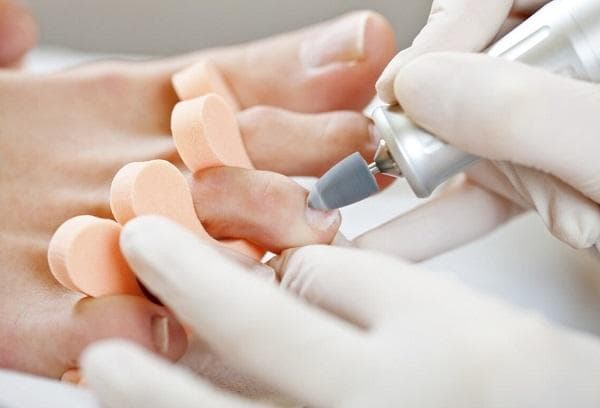
It is important to know! In addition to improving the appearance of nails, a hardware pedicure helps solve various problems in the foot area. Thanks to this procedure, it is possible to remove cracks and get rid of the negative manifestations of hyperkeratosis.
The disadvantages of cosmetic manipulation include the possibility of getting a burn. This is due to the very high rotation speed of the cutters. To exclude this, the master is required to have a high degree of professionalism and complete concentration on the procedure. Another disadvantage is the use of formulations containing acids. If they enter the bloodstream, they can cause allergic reactions. Also, not all salon visitors are satisfied with the price of a hardware pedicure, which is at least twice as high as the cost of a classic treatment.
Features of hardware pedicure

Hardware pedicure is something completely different, since it does not require preliminary steaming of the feet. This is the so-called “dry” pedicure. The essence of this technique is the use of grinding machines with various attachments.
When they are used, dead skin is removed in a slightly different way, and a person simply cannot physically achieve the same result. Each of the cutters used rotates at an incredible speed - about 30,000 rpm. This effect cannot be achieved with conventional manual sanding.
What are the benefits of a hardware pedicure?
? It was appreciated by many girls thanks to:
- There is no need for steaming - to put the legs in order, it is enough to treat them with a milling cutter for about 10 minutes. During the remaining time of the procedure, the pedicure specialist thoroughly disinfects, moisturizes and softens the skin.
- No injuries - the cutter, unlike conventional files and any other mechanical abrasives, removes dead cells gradually, layer by layer, carrying out the process evenly.
- Durability of the result - since the skin is cleared of the stratum corneum gradually, without sudden transitions, it does not strive to renew itself as intensively as after a classic pedicure. Even after the first trip to a hardware pedicure, you can do it again no more than a couple of times a month. And when the desired effect is achieved, no more than once a month.
But it was not without its drawbacks:
- There is a risk of getting a burn - when using a cutter, the master does not always feel how much skin needs to be removed in a particular place. At the same time, the speed is very high and you can burn your leg.
- The use of chemical acids - of course, the amount used to soften the epithelium is small, but some can enter the blood. An allergic reaction is also possible.
- The price is conditional, but still a drawback. The cost of a pedicure performed using a device is 2 times higher than a classic one.
What is better to choose
Before visiting a specialist, clients sometimes cannot decide between a classic and hardware pedicure. Before you finally settle on one of the two options, it is worth considering some important points:
- Condition of the skin on the legs. If there are no problems with it, you can choose a trimmed pedicure. However, if you have thin, sensitive skin, it is recommended to avoid this method of treating nails. In such a situation, it is better to resort to a hardware technique, which has a more gentle, delicate effect on the plates and adjacent areas.
- Presence of certain diseases. You should not perform the classic procedure if you have pathologies listed in the list of contraindications. Also, you cannot hide any violations from the master. Otherwise, undesirable reactions of the body may occur at the stage of steaming the legs. The best choice in this case would be a dry pedicure.
- Fungal infection of the feet. Intense impact and microtrauma caused during a classic pedicure can provoke an exacerbation of the existing disease. If there is a fungus, you should refrain from pruning. If your nails and skin are affected by fungus, opt for hardware manipulation. During the session, the specialist will carefully and carefully clean the affected areas. This will allow you to get rid of the disease faster and avoid relapse.
If there are no problems in the foot area, choose the option that suits your personal preferences and financial capabilities.
We recommend: The best and worst apartment layouts – you need to know what to buy!
All about pedicures: why you don't need baby heels? The pro tells
Manicurist and pedicurist Ekaterina Kirillina talks about what an ideal pedicure is, how to cut your nails correctly at home and why you shouldn’t throw away your grandmother’s pumice stone.
We recently conducted two (we couldn’t fit into one :)) live broadcasts with Katya Kirillina, a cool nail artist and co-owner of our Beautyinsider & KA2 salon. We were talking about pedicure - which one is better? How to maintain your home? Answers to pressing questions are below.
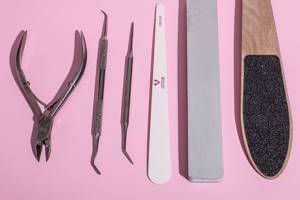
What type of pedicure is best?
The type of skin on the feet plays a key role. Which one do you have, dry or wet?
For dry skin, a hardware pedicure is suitable: it does not require soaking or steaming your feet, and you can always clearly see whether something still needs to be removed somewhere, or whether it has been removed enough and it’s time to stop.
For wet conditions , a combined pedicure is suitable: wrap your feet in a hot napkin to soften the calluses, then remove them with a file and polish your feet with a device.
Diabetic foot is a different story. People with diabetes have very dry, brittle skin that is easily damaged.
Acid pedicure is suitable for dry and wet skin of the feet. It is good because it gives a quick and long-lasting result: the maximum possible is removed and the skin grows in an even and dense layer. Smooth legs for a month and a half.
Acid pedicure also comes in different forms. The classic version is done in 2 stages: first, a keratolytic is applied (it loosens skin flakes), then a composition with acids (it softens and dissolves corns). If there are few corns, there is no point in doing the full procedure. Then the light version is suitable: we soak the keratolytic for less time and apply the second composition in smaller quantities (or not at all).
The light version is also used for diabetic feet. Diabetics have very sensitive skin and often have microcracks; acids can corrode these cracks and cause more harm than good.
As practice shows, the best result is obtained when the master knows all the techniques, works perfectly with a file, a device, and nippers, and combines them depending on the indications - the client’s feet.
I love classic pedicure, but my master does not. Why?
A “classic” procedure is when the feet are pre-soaked in a basin. Clients often love her because they are embarrassed, especially after a working day - they’ve been walking all day, their feet smell bad, and here they have to be literally thrust under the nose of the master. No need to be shy! A pedicurist is almost a doctor: he is used to everything, works in a mask, and before starting work applies a disinfectant that partially eliminates odors.
And many masters (including me) don’t like classic pedicures, because after soaking the skin swells so much that it is impossible to understand exactly how much built-up skin needs to be removed. Therefore, they are often sawed through.
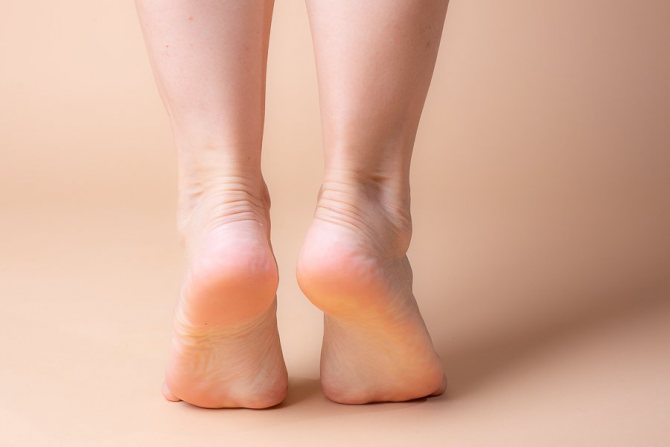
The master says that “heels like a baby’s are bad.” Why?
The notorious “heels like a baby’s” are an achievable, but completely unnecessary ideal for an adult. Babies, as you know, do not walk, but lie in strollers, so the skin on their feet is soft, smooth and pink. A pedicurist, of course, can remove all the overgrown skin and make perfect pink heels, but then it will hurt to walk. It's better to leave a little than to take everything down to zero.
So how much skin to remove, and when should the specialist stop?
The master and the client decide together how much overgrown skin to leave. This also depends on the client’s lifestyle and profession - for example, if a ballerina removes all calluses and corns, she simply will not be able to dance. Therefore, if there are any “necessary” calluses, it is better to say so right away.
It is sometimes difficult to understand from the sensations whether enough skin has been removed or not. But there is a clear signal when you definitely need to stop: when the heel begins to feel the file. While your corns are being removed, you feel the file as if through a thick sock. As soon as the corns are cut down, sensitivity immediately increases.
The master reaches with a stick under the free edge of the nail - is that right?
Right. In this way, it removes excess skin that is formed due to the friction of the nail against the nail bed and shoes. If this skin is not removed in time, it will accumulate, harden and, in fact, turn into a foreign body. And next to it, voids will form under the nail where dirt will accumulate.

Three days after going to the salon, my feet become rough again. What is the reason?
There can be many reasons: uncomfortable shoes (narrow or ones that are too small for you), playing sports, the habit of walking barefoot on the lawn. Heavy weight too.
Look, maybe you have new shoes, high heels or worn out UGG boots? Remember, don't buy shoes that fit you. And it is best to buy it in the evening, when the leg is swollen and larger.
If you run, cycle, or swim in the pool, don’t expect perfect feet. No cream will help.
But we cannot exclude the possibility that the master made a mistake in choosing the type of pedicure or was simply in a hurry. For the smoothest possible feet, for example, I like to polish (seal, as it were) all unnoticeable irregularities with a buff. This way, small scratches are smoothed out and the skin then grows less.

What problems can be solved in the salon, and which ones should you go to the doctor for?
Medical pedicure - work with severely ingrown nails, keratosis (when the skin grows too actively and cracks appear on the feet) and other pathologies. In each specific case, your master must say whether he can cope with the existing problem, or whether a scalpel is required.
You also need to understand that a pedicure in a salon is aesthetic. The master, among other things, takes care of giving the nails a beautiful shape and applying the coating evenly. And medical pedicure is not about beauty - nails will be cut as they grow, and not as “beautiful.” There may not be any coverage at all.
Can you rub your heels with a pumice stone at home?
It is possible, but you need to do it correctly. Pumice is a stone that removes rough skin and leaves microdamages on soft skin. Then, in response to injury, the skin grows stronger.
To properly remove corns, you need to remove the first layer of rough skin with a pumice stone in the shower, then get out of the shower and wait a couple of minutes for your feet to dry a little. When the leather is slightly damp, polish it with a soft file or buff. Wooden or metal files with an abrasiveness of 180-240 are suitable for polishing.
It is better not to touch the calluses under your fingers - it is easy to saw through the skin there, and walking will be uncomfortable.
You don’t have to use a pumice stone at all, but rub your feet with a soft file once a week - that’s enough. The main thing is not to cut anything with scissors or wire cutters. (Yes, there are people who remove calluses with nippers. Don’t do that.)
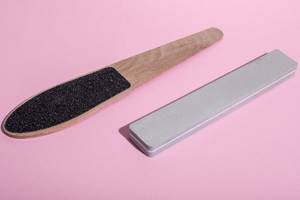
Is it okay to get a pedicure if you have fungus?
Yes. Masters are used to everything and usually treat fungus normally. All instruments are disinfected, disposable files are used - there is no danger.
However, it is still better to warn the salon administrator that you have such a problem: there may be other clients in the next chair who may be scared.
What is the most correct shape of toenails?
Soft square. Even so - a square with rounded corners.
There are two important points here. The first is to ensure that the corners of the nail are precisely semicircular, because the sharp ones will grow and dig into the finger.
Second, the end of the nail should not be oval, but straight. Then the nail will not break on the shoes.
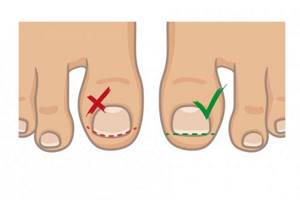
How to cut your nails yourself at home?
Surprisingly, many people do not know how to cut their toenails - they cut them crooked or at the root, causing them to become ingrown.
How to?
1. Take a file. It is better not to cut your nails, but to file them, because scissors often cause nails to crack.
2. Round the edges of the nail.
3. Cut off the main length, leave 1-2 mm.
4. Make the edge straight, not semicircular. It is tempting to file the nail along the smile line (the line that separates the nail bed and the free, regrown edge of the nail), but this can cause the nail to grow into the side fold.
In general, many salons offer a separate service - nail cutting. Come - we will do everything!
How else can you take care of your feet at home?

Once a week, you can rub your heels with a wooden file and a buff - use a file to remove rough skin, then polish it with a buff. The main thing is that your feet should be steamed, but dry. That is - see above - after a shower, get out, dry yourself and you can polish.
There is also a cool thing - a mitten for exfoliating the body. This is how they work in hammams in Turkey. It is impossible to saw through the skin of your feet with this mitten, but you can carefully remove dead skin cells and maintain smoothness.
If you use deodorants or foot powder, remember that they are applied only to dry skin. If you apply it while it is wet, there will be no effect.
Products with acids and urea are very popular. They promise to remove calluses. Urea is primarily indicated for wet feet, but people, without understanding, use it for dry feet. It also happens that they put acid socks on top. As a result, they dry out and saw the feet themselves, and then go for a pedicure to restore them. I am in favor of products with acids or urea being prescribed by a podologist or dermatologist.
How to get rid of corns?
A corn is rough skin on the foot. It does not need to be cut or trimmed. The master removes it with a file, but not completely - under the toes, for example, he leaves it, otherwise it will be uncomfortable for you to walk. And he must also leave those corns that you ask for - if (see above) without them you, for example, cannot dance.
Common causes of corns are uncomfortable shoes and/or flat feet. In this case, I recommend going to an orthopedist and having custom insoles made. Everyone's feet are different, so individual insoles are needed.
In addition, corns may appear if you take up a new sport or go on a long hike.
Can I trim my cuticles myself at home?
I don't recommend cutting it specifically. It is better to file it with a buff or remove it with cuticle liquid. But if the cuticle has grown too much, then it’s better, of course, to go to the salon.
How can I understand that my pedicurist is a real pro?
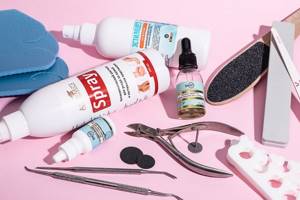
It is clear that a good technician wears gloves and a mask, disinfects tools and surfaces that can be disinfected, and uses disposable materials as much as possible. It is obvious.
Another good master will try to find out more about your lifestyle at the first meeting: do you play sports, do you have a standing job, do you wear heels, how do you take care of your feet at home. In short, everything that can matter.
And he should also offer you a specific pedicure option and justify why you need this particular one. For example, my regular client asks me to give her an acid pedicure because she is leaving for the sea in two days. But I see that I had it 2 weeks ago, and the skin did not have time to grow. Then, instead of giving her a full procedure, a good master will explain that now it’s better to just say goodbye to the device a little and repaint the nails. In general, for a good master, the main thing is not his own benefit, but the benefit for the client.
Ekaterina Kirillina
Ekaterina Kirillina is a manicurist, co-founder of the Beauty Insider & KA2 salon.
Basic pedicure tools
To perform the procedure, a set of tools and tools is required:
- foot steam bath;
- towel;
- scissors;
- pedicure machine;
- forceps;
- cuticle softener;
- nail brush;
- file;
- nail polish remover;
- separation plates;
- orange sticks;
- nutritious cream;
- antiseptic;
- nail polish;
- cotton pads.

Precautions when working with a pedicure machine
Before you start using the machine, you need to familiarize yourself with the following important rules:
- appliances made of stainless steel last longer;
- the machine should be comfortable, have notches on the handle to protect against slipping when performing the procedure;
- The use of a razor is not allowed: it can cause severe foot injuries and, as a result, severe bleeding.
The machine is used to remove rough skin and calluses. It has very sharp special blades, so you need to use it carefully and carefully.
During work it is necessary to observe safety measures:
- Before manipulation, feet must be treated with an antiseptic solution;
- the skin is cut from top to bottom, while controlling the pressure;
- the pedicure blade must be sharp;
- the remaining skin is removed by grinding, using a file, the places where it was not possible to obtain a result after using the machine are processed;
- in the heel area, the skin is cut off from one edge to the other;
- the machine must be treated with a disinfectant solution.
